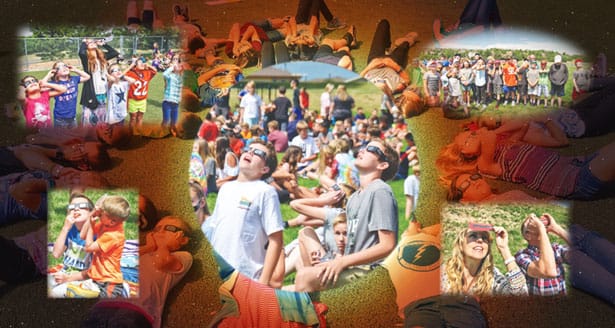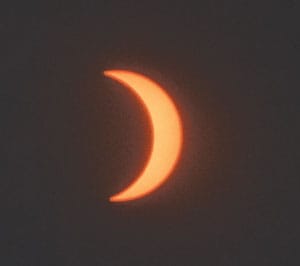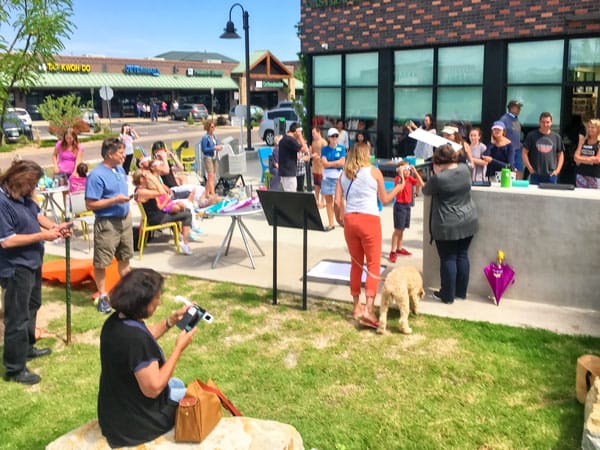Two minutes of partial totality; a lifetime of memories

On August 21, Douglas County students and residents flocked outdoors for the partial eclipse. Events were held at schools and the Castle Pines branch at Douglas County Libraries. With glasses in hand, for close to three hours, skywatchers saw a breathtaking sight of the moon slowly passing between the Earth and the sun, blocking approximately 94 percent of the sun in Douglas County.
By Lynne Marsala Basche; courtesy photos
Monday, August 21 brought clear skies and the opportunity to experience a piece of history, a solar eclipse. The event brought enthusiastic skywatchers of all ages outside to gaze at the spectacular occurrence. The last time the contiguous United States witnessed a total solar eclipse was in 1979.
Those in Douglas County saw a partial solar eclipse, which began at 10:23 a.m. with a peak at 11:47 a.m., and the end at 1:15 p.m. For close to three hours, local viewers saw a breathtaking sight of the moon slowly passing between the Earth and the sun, blocking approximately 94 percent of the sun in Douglas County.
For weeks leading up to the eclipse, there was a scurry to find approved glasses, including lines wrapped around corners at businesses and pleas on social media platforms. For avid enthusiasts, travel plans were finalized to visit locations in the path of totality. “It was truly amazing to see the entire sky turn dark and to be surrounded by a 360 degree sunset along the edge of the sky,” said Castle Pines resident Joanie May, who, along with her family, traveled to Wyoming. “To see the sun slowly disappear until it was completely covered by the moon was astonishing. The sun appeared as a black disc with only the corona visible. The birds became quiet and the crickets started to chirp. Even the wind stopped blowing.”
Schools planned several events around the eclipse, including picnics, gatherings and casual trips outside during free periods. Excited students were ready for the adventure, and armed with glasses, pinhole projects, saltine crackers (to view reflections), and other creative viewing devices, they flocked outdoors for the celestial event.
Buffalo Ridge Elementary students spent time on the field enjoying the event. “I like that it got all orange,” said kindergarten student Ezekiel. Alex echoed his friend’s sentiment and added, “It got dark and cold.”
Photo enthusiasts spent the eclipse capturing the magic of the event.
The Douglas County Libraries – Castle Pines also got into the spirit and had lines of people hoping to receive a pair of glasses, which were provided through a national grant. “It was heartening to see so many [people] share with their neighbors so more could experience the view through the glasses,” said Aspen Walker, manager of the Douglas County Libraries – Castle Pines. “We had a spotting scope set up to cast an image of the eclipse on the ground, pinhole cameras, astronaut ice cream, and the NASA livestream running in the event hall.”
Memories were made, and for a few hours, nothing mattered except the magical eclipse. Who is already planning for the 2024 eclipse?